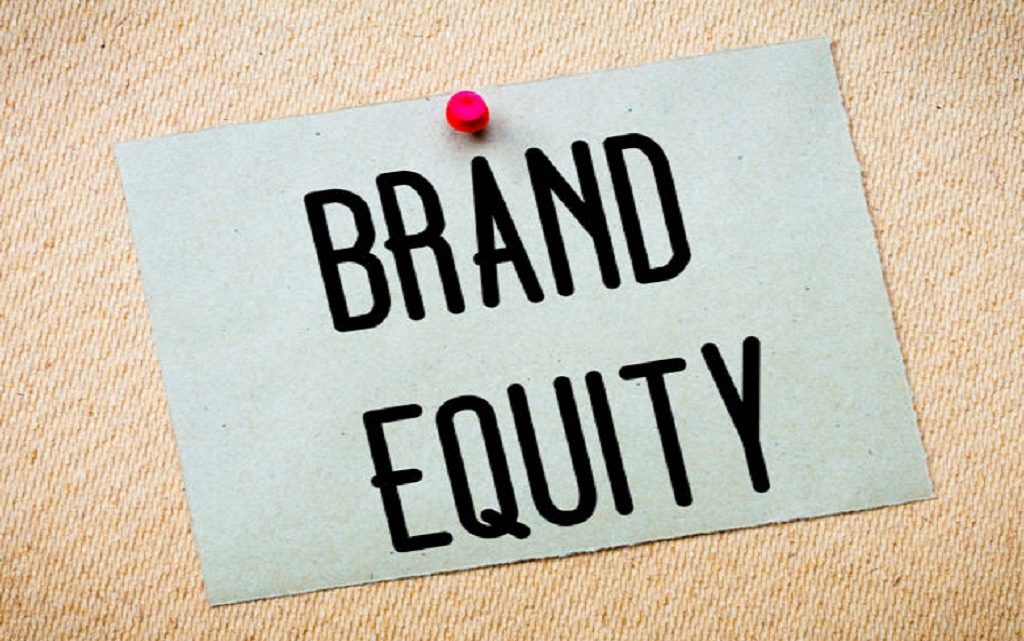
BRAND EQUITY
November 20, 2018“Good marketing makes the company look smart. Great marketing makes the customer feel smart.”
‘Brand equity’ is a phrase used in the marketing industry which describes the value of having a well-known brand name, based on the idea that the owner of a well-known brand name can generate more revenue simply from brand recognition; that is from products with that brand name than from products with a less well known name, as consumers believe that a product with a well-known name is better than products with less well-known names.
Brand equity refers to the value of a brand. In the research literature, brand equity has been studied from two different perspectives: cognitive psychology and information economics. According to cognitive psychology, brand equity lies in consumer’s awareness of brand features and associations, which drive attribute perceptions. According to information economics, a strong brand name works as a credible signal of product quality for imperfectly informed buyers and generates price premiums as a form of return to branding investments. It has been empirically demonstrated that brand equity plays an important role in the determination of price structure and, in particular, firms are able to charge price premiums that derive from brand equity after controlling for observed product differentiation.

Some marketing researchers have concluded that brands are one of the most valuable assets a company has, as brand equity is one of the factors which can increase the financial value of a brand to the brand owner, although not the only one. Elements that can be included in the valuation of brand equity include (but not limited to): changing market share, profit margins, consumer recognition of logos and other visual elements, brand language associations made by consumers, consumers’ perceptions of quality and other relevant brand values.
Consumers’ knowledge about a brand also governs how manufacturers and advertisers market the brand. Brand equity is created through strategic investments in communication channels and market education and appreciates through economic growth in profit margins, market share, prestige value, and critical associations. Generally, these strategic investments appreciate over time to deliver a return on investment. Brand equity can also appreciate without strategic direction.
While most brand equity research has taken place in consumer markets, the concept of brand equity is also important for understanding competitive dynamics and price structures of business-to-business markets. In industrial markets competition is often based on differences in product performance. It has been suggested however that firms may charge premiums that cannot be solely explained in terms of technological superiority and performance-related advantages. Such price premiums reflect the brand equity of reputable manufacturers.
Brand equity is strategically crucial, but famously difficult to quantify. Many experts have developed tools to analyze this asset, but there is no agreed way to measure it. As one of the serial challenges that marketing professionals and academics find with the concept of brand equity, the disconnect between quantitative and qualitative equity values is difficult to reconcile. Quantitative brand equity includes numerical values such as profit margins and market share, but fails to capture qualitative elements such as prestige and associations of interest. Overall, most marketing practitioners take a more qualitative approach to brand equity because of this challenge. In a survey of nearly 200 senior marketing managers, only 26 percent responded that they found the “brand equity” metric very useful.
WHAT IS THE PURPOSE OF BRAND EQUITY?

The purpose of brand equity metrics is to measure the value of a brand. A brand encompasses the name, logo, image, and perceptions that identify a product, service, or provider in the minds of customers. It takes shape in advertising, packaging, and other marketing communications, and becomes a focus of the relationship with consumers. In time, a brand comes to embody a promise about the goods it identifies—a promise about quality, performance, or other dimensions of value, which can influence consumers’ choices among competing products. When consumers trust a brand and find it relevant, they may select the offerings associated with that brand over those of competitors, even at a premium price. When a brand’s promise extends beyond a particular product, its owner may leverage it to enter new markets. For all these reasons, a brand can hold tremendous value, which is known as brand equity.
Brand Equity is best managed with the development of Brand Equity Goals, which are then used to track progress and performance.
Managing Brand Equity

One of the challenges in managing brands is the many changes that occur in the marketing environment. The marketing environment evolves and changes, often in very significant ways. Shifts in consumer behavior, competitive strategies, government regulations, and other aspects of the marketing environment can profoundly affect the fortunes of a brand. Besides these external forces, the firm itself may engage in a variety of activities and changes in strategic focus or direction that may necessitate adjustments in the way that its brands are being marketed. Consequently, effective brand management requires proactive strategies designed to at least maintain – if not actually enhance – brand equity in the face of these different forces.
Brand Reinforcement
As a company’s major enduring asset, a brand needs to be carefully managed so its value does not depreciate. Marketers can reinforce brand equity by consistently conveying the brand’s meaning in terms of
(1) what product it represents, what core benefits it supplies, and what needs it satisfies
(2) how the brand makes product superior and which strong, favorable, and unique brand associations should exist in consumers’ minds.
Both of these issues – brand meaning in terms of products, benefits, and needs as well as brand meaning in terms of product differentiation – depend on the firm’s general approach to product development, branding strategies, and other strategic concerns.
Brand Re-Genesis
Any new development in the marketing environment can affect a brand’s fortune. Nevertheless, a number of brands have managed to make impressive comebacks in recent years. Often, the first thing to do in revitalizing a brand is to understand what the sources of brand equity were to begin with. Are positive associations losing their strength or uniqueness? Have negative associations become linked to the brand? Then decide whether to retain the same positioning or create a new one, and if so, which new one.
Maintaining Brand Consistency
Without question, the most important consideration in reinforcing brands is the consistency of the marketing support that the brand receives – both in terms of the amount and nature of marketing support. Brand consistency is critical to maintaining the strength and favorability of brand associations. Brands that receive inadequate support, in terms of such things as shrinking research and development or marketing communication budgets, run the risk of becoming technologically disadvantaged or even obsolete.Consistency does not mean, however, that marketers should avoid making any changes in the marketing program. On the contrary, the opposite can be quite true – being consistent in managing brand equity may require numerous tactical shifts and changes in order to maintain the proper strategic thrust and direction of the brand. There are many ways that brand awareness and brand image can be created, maintained, or improved through carefully designed marketing programs. The tactics that may be most effective for a particular brand at any one time can certainly vary from those that may be most effective for the brand at another time. As a consequence, prices may move up or down, product features may be added or dropped, ad campaigns may employ different creative strategies and slogans, and different brand extensions may be introduced or withdrawn over time in order to create the same desired knowledge structures in consumers’ minds.






